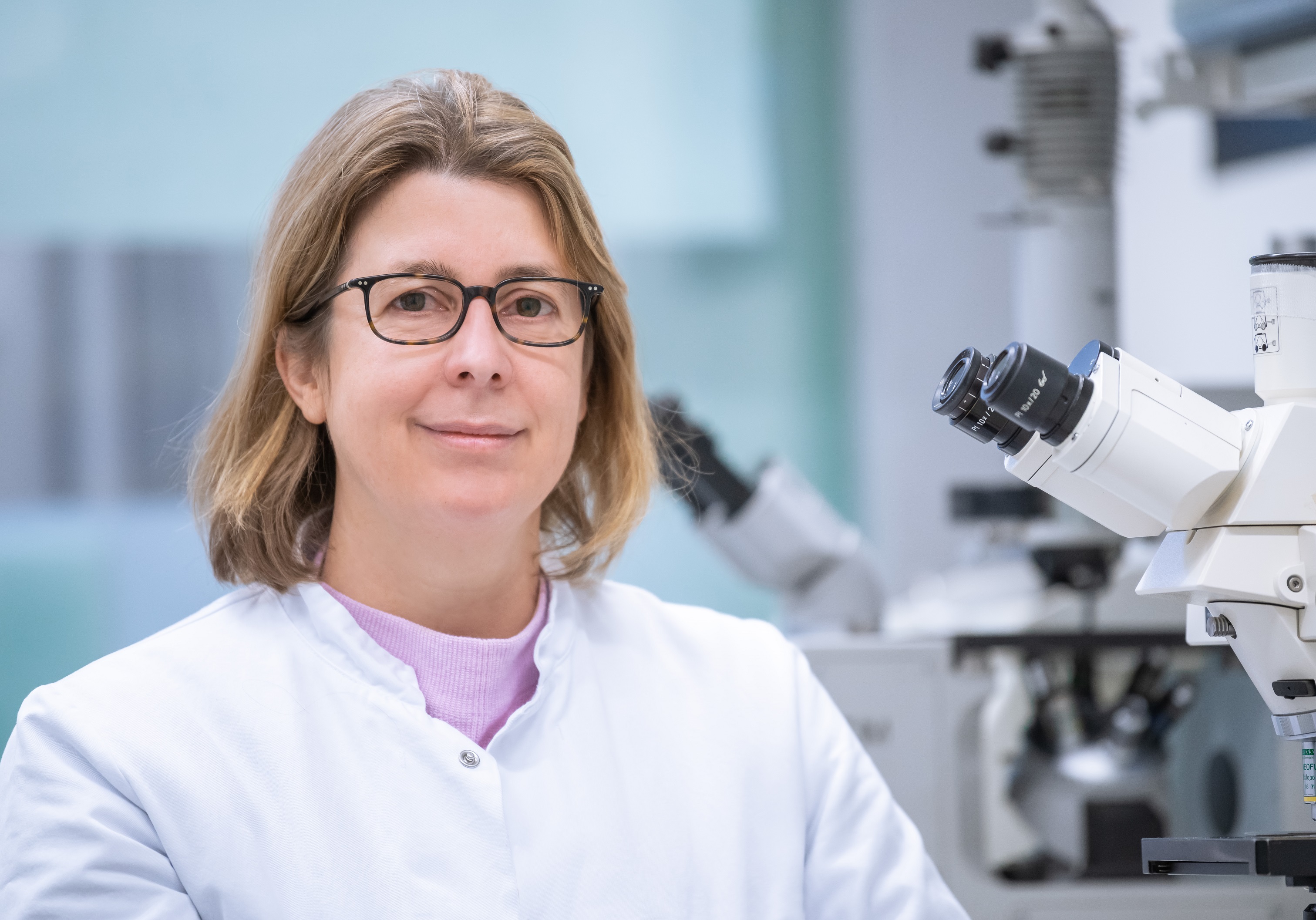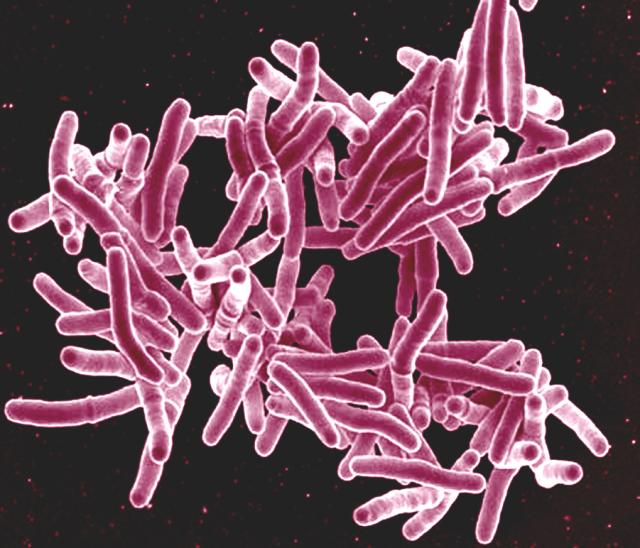App for tuberculosis diagnosis
"Find-TB" aims to improve access to tuberculosis diagnostics
Globally, the majority of children with tuberculosis remain undiagnosed and therefore untreated because their symptoms are categorised incorrectly. Researchers at Heidelberg University Hospital want to develop an app that analyses medical information, risk factors and local surveillance data to calculate individual risk of infection and test those who might be affected with TB as early as possible.
 Prof. Dr. Claudia Denkinger and her team at the Institute of Infectious Diseases and Tropical Medicine want to develop a prognosis app that calculates the risk of tuberculosis infection and helps those with the disease to be diagnosed more quickly. © Heidelberg University Hospital
Prof. Dr. Claudia Denkinger and her team at the Institute of Infectious Diseases and Tropical Medicine want to develop a prognosis app that calculates the risk of tuberculosis infection and helps those with the disease to be diagnosed more quickly. © Heidelberg University Hospital"Globally, of all infectious diseases, tuberculosis is the one that claims the most lives," reports Prof. Dr. Claudia Denkinger from Heidelberg University Hospital (UKHD). "Twice as many people die from TB as from AIDS, the second biggest killer. Unfortunately, the public is not sufficiently aware of this fact." The only time these figures were exceeded was in 2020 and 2021 with COVID-19.
Tuberculosis is caused by the pathogen Mycobacterium tuberculosis and usually manifests itself in the lungs. It is transmitted by infectious droplets and aerosols released when coughing, sneezing or speaking. According to estimates by the World Health Organisation (WHO), around a quarter of the world's population has a latent tuberculosis infection. 90 to 95 percent of people with an intact immune system are able to eliminate the bacteria or encapsulate them in small nodules known as tubercles. However, the disease breaks out in more than 10 million people every year and around 1.3 million of those affected die - despite TB being easily treatable.1) Denkinger, the Medical Director of the Department of Infectious Diseases and Tropical Medicine at the UKHD’s Centre for Infectious Diseases explains: "There is a huge diagnostic gap in TB. More than 40 percent of patients are not diagnosed and therefore have no access to treatment. In children, the proportion is even higher at over 60 percent, and they also have a significantly higher mortality rate."
Prognosis app to narrow the diagnostic gap
Without treatment, TB leads to death in half of all cases, whereas 85 percent of those affected survive when given medication. The disease occurs predominantly in South-East Asia (especially India, Indonesia, China) and Africa (especially Nigeria, Democratic Republic of Congo, South Africa) with several hundreds of new cases per 100,000 inhabitants each year. In Europe, the average incidence is only around 10 new cases per 100,000 inhabitants; this figure is even lower in Germany.2)
Diagnosis is difficult as the symptoms are very unspecific at the beginning of the outbreak. Fatigue and weakness, loss of appetite, slight fever or increased sweating may occur. In children, tuberculosis leads to weight loss, growth disorders and developmental deficits; the cough typical of adults in the later stages is often absent.
"We need to ensure that more children at high risk of contracting the disease are diagnosed," says Denkinger, who has been working in the field for a long time and has been an elected member of the WHO's Tuberculosis Diagnostics and Laboratory Strengthening Advisory Group since 2021. "To this end, we want to develop a prognosis app that calculates individual risk of tuberculosis." Since early 2024, her "Find-TB" project has been funded with around two million euros from the European Research Council as part of a five-year Consolidator Grant.
AI combines health and regional data
The infectiologist explains: "We want to use artificial intelligence to analyse patient data on non-specific symptoms, while also encompassing previous examinations and other illnesses as well as living conditions and contact with people infected with TB. This information will then be compared with country-specific surveillance data to show, for example, where there are hotspots or what the living conditions are like in the place where those affected live."
The big challenge with this wealth of information will be prioritising individual parameters in relation to each other so that a meaningful value can ultimately be calculated. Denkinger's team is therefore pursuing two different strategies: one is to prioritise the medical data - at least in part - while the other is to leave this to AI. The researchers have access to national studies via the WHO, with gives them 400.000 patient data sets to work on.
Ultimately, the aim is to develop an app for smartphones or computers in which healthcare staff can enter all relevant child characteristics simply, quickly and intuitively. The programme will then calculate their individual TB risk and provide a recommendation for further medical treatment. This would allow local health services to make a pre-selection, particularly useful in regions with limited resources, to ensure the targeted use of limited diagnostic resources. Denkinger is very confident that she will be able to develop a basic model within the funding period and provide proof of principle in a pilot study.
Bottleneck: diagnosis
 Rasterelektronenmikroskopische Aufnahme der Tuberkulose-Erreger (Mycobacterium tuberculosis).
Rasterelektronenmikroskopische Aufnahme der Tuberkulose-Erreger (Mycobacterium tuberculosis).
Source: "Mycobacterium Tuberculosis Bacteria, the Cause of TB” by NIAID licensed by CC BY 2.0 (https://creativecommons.org/licenses/by/2.0/)"The problem with tuberculosis is not the treatment, but the prior diagnosis and monitoring of the treatment response," Denkinger continues. Due to the disease’s unspecific symptoms the pathogen always needs to be identified. However, in contrast to HIV or COVID, no simple methods such as rapid lateral flow tests are yet available. And as growing a laboratory culture is very time-consuming and takes several weeks, the bacterium is still usually identified under the microscope, as it was in the days of Robert Koch. This requires secretions from the deep respiratory tract, known as sputum. However, children under the age of five cannot generally provide sputum and so samples have to be taken from the back of the nose or stomach using a tube in a complex procedure requiring time and expertise that is not available in the affected regions. A clear indication of infection through the app could lead to more targeted measures and help patients to be diagnosed more quickly. Active tuberculosis can then be treated over six months with a combination of four different antibiotics.
Tuberculosis is also becoming problematic again in Europe
Back in 2014, the WHO adopted the End TB Strategy3), which aims to reduce the TB incidence rate by 80 percent and deaths by 90 percent by 2030. Researchers around the world are working hard on various approaches to achieve these goals. The main focus is on developing new vaccines, as the existing BCG vaccine provides insufficient protection. Various strategies are also being pursued to make TB diagnostics faster, simpler, cheaper and more precise. One of the ways this is being done is through the R2D2 TB Network (Rapid Research in Diagnostics Development for TB Network)4), which brings together experts from a wide range of disciplines from ten different countries under Denkinger’s leadership.
Unfortunately, TB is also becoming more prevalent again in Europe: "Cases have risen by a third in our outpatient clinic," Denkinger reports. "And resistance has more than doubled." This worrying development originates primarily in regions of the former Soviet Union, where, after the collapse of the state, courses of treatment were often not fully completed. "In Ukraine, the resistance rate is already almost 30 percent at first diagnosis, and it is also significantly higher in other Eastern European countries than in Western Europe," says Denkinger. Since early 2024, Denkinger’s excellent scientific work has been funded by the German Research Foundation in the form of a Heisenberg Professorship that will allow her to continue her important research in the field of tuberculosis diagnostics. The UKHD also has plans to expand the infectiology department at the Centre for Internal Medicine so that her team will have access to hospital beds for patients with difficult-to-treat or newly emerging infections.